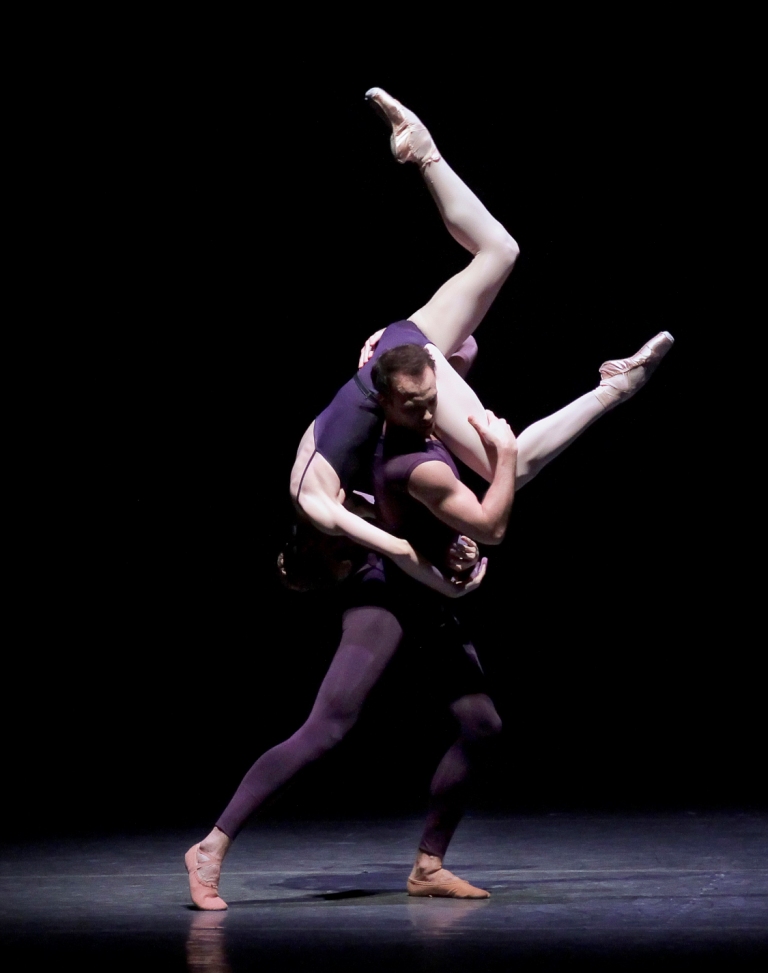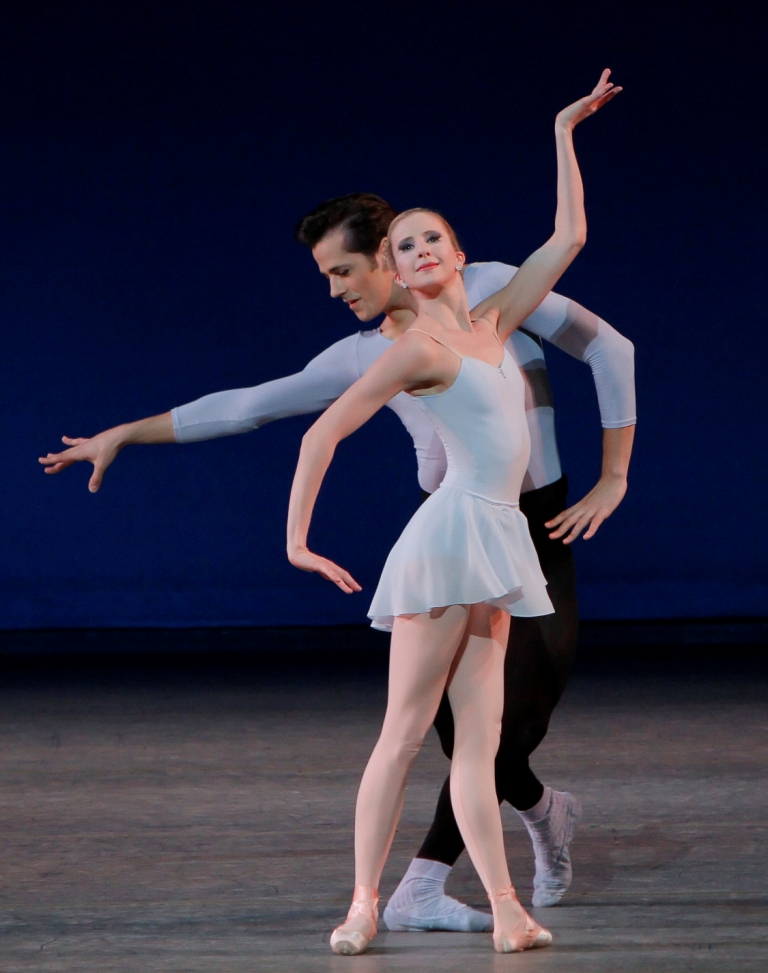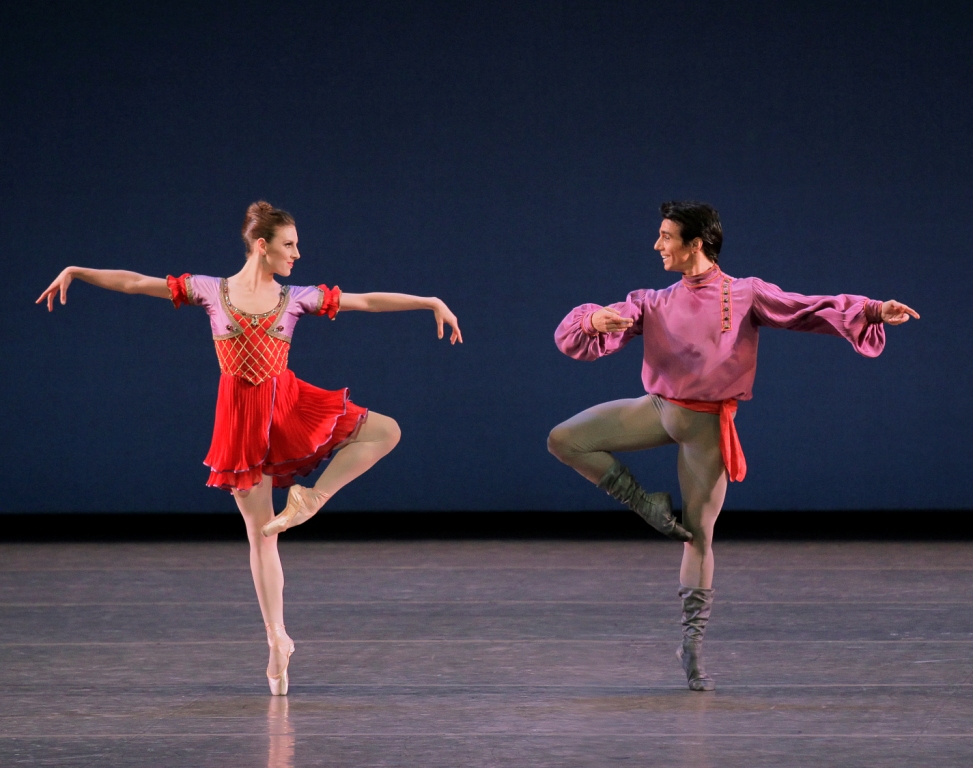NYC Ballet and ‘Super Nature’: the week in dance
For this week's column, our dance critic Lightsey Darst talks ballet - specifically, the touring performances by New York City Ballet's MOVES project, recently presented by Northrop Dance.



WHEN NEW YORK CITY BALLET (NYCB) CAME TO TOWN LAST WEEK with its MOVES project—select mini-companies touring the country with a few musicians—I was excited to see the dancing and hear the live music, but mostly I was excited for the choreography. The company brought works by Christopher Wheeldon, George Balanchine, William Forsythe (oh, and a little Peter Martins), all vital to contemporary ballet, none frequently seen here.
Wheeldon’s Polyphonia opens with a bang: four couples in leotards and tights etch spidery shadows against Gyorgy Ligeti’s thicket of piano rhythms. But my pleasure in suddenly so-pointed feet and spotlit lines quickly curdled. Wheeldon’s musically obedient choreography runs by so fast, it’s as if he doesn’t trust the dancers with time, and the steps are all so flat they could be just as well executed by silhouettes. Partnering (of which there’s a lot) is nakedly manipulative—women lofted horizontally and laid out in one split after another. I would say they were hoisted like sacks-of-potatoes, but these dancers are so thin no one could call them potatoes; they are, at most, Pringles. The men are just as gaunt, so quite a lot of Polyphonia brings to mind copulating mantises, except that mantises, I understand, move much more slowly, and then the ladies have a snack afterwards. Altogether, I felt the way I imagine liberal Catholics do when a bishop says something retrograde: this is not my beautiful religion, you want to protest, but you know you have no power. Wheeldon is already anointed as a leading ballet light, and—
But wait a minute: Why am I even talking about this? I’m a Twin Cities critic. I should be talking about something that matters more to dance here, like, for example, BodyCartography’s Super Nature, which premiered at the Walker Art Center this past weekend. Alas, I was out of town. I feel bad about this, but these things happen: You should be drawing inspiration from an important work by a local company on the verge of making it big, but instead you find yourself watching a guy bop around on a street corner in a mask in Mankato, trying to interest absolutely no one (it was a lazy Saturday afternoon) in nothing. Anyway, back to Wheeldon. Does anyone here care about him? Probably not. Nuts to Wheeldon!
But what about the rest of the NYCB program? Does anyone here care about Balanchine? I hope so, if only because Balanchine’s work, and what’s happened to it since his time, tells us some interesting things about dance in America. Balanchine prized American recklessness; he made dances to showcase the wild loveliness of girls who never learned to be “pretty”. But now all the Balanchinean un-positions have become positions: Every extended arm opens right out of the shoulder socket, and every arabesque shrieks, an asterisk for exultation. I’ve never seen Duo Concertant before, but I can imagine how once the superfast solos of the two lovers might have suggested the heedlessness that opens them to the dance’s tragic finale. Today’s dancers (Megan Fairchild and Chase Finlay), though, accomplish it all without risk, and the conclusion comes meaninglessly out of the blue.
______________________________________________________
Balanchine made dances to showcase the wild loveliness of girls who never learned to be “pretty,” but now all the Balanchinean un-positions have become positions — every extended arm opens right out of the shoulder socket and every arabesque shrieks, an asterisk for exultation.
______________________________________________________
Why does ballet so readily absorb its own violation? Perhaps that’s merely the nature of a robust system. A more interesting question: Why does freedom matter so much to us? I’d speculate on what a classical dance can give us now, except that the drive for freedom occurs in all kinds of American dance. BodyCartography, for example, constantly tries to elicit a sensual, instinctive freedom. They work towards this from within the pedestrian body rather than the ballet form, but the effect is similar: You revel when light shines through the cracks, when something breaks free.
Speaking of breaking free, my favorite piece of the NYCB evening, which I could see another dozen times, was Forsythe’s Herman Schmerman pas de deux. As the silly name suggests, this is a light work, a divertissement; even so, it did the heavy work of lifting me from my Wheeldon-induced slump. Forsythe makes the classical a playground, and Maria Kowroski and Robert Fairchild respond, tumbling out the rich resources of their physical intelligence. Apostate as he’s sometimes taken to be, Forsythe here suggests we can reenter the classical as we choose. The man makes a little circle in the air with his finger, staring at his digit in bewilderment; the woman takes his hand, molds it, and leads him to a finger turn (a move in which the woman spins, held in place only by the man’s finger in her fist). The lights go out on her turning–perfectly classical, by her own free will.
______________________________________________________
Noted performance details:
New York City Ballet MOVES, presented by Northrop Dance, took the Orpheum Theater stage in Minneapolis October 23 and 24.
BodyCartography’s Super Nature made its world premiere at the Walker Art Center October 26 – 28.
______________________________________________________
About the author: Originally from Tallahassee, Lightsey Darst is a poet, dance writer, and adjunct instructor at various Twin Cities colleges. Her manuscriptFind the Girl was recently published by Coffee House; she has also been awarded a 2007 NEA Fellowship. She writes a weekly column on dance for mnartists.org.